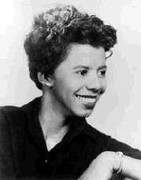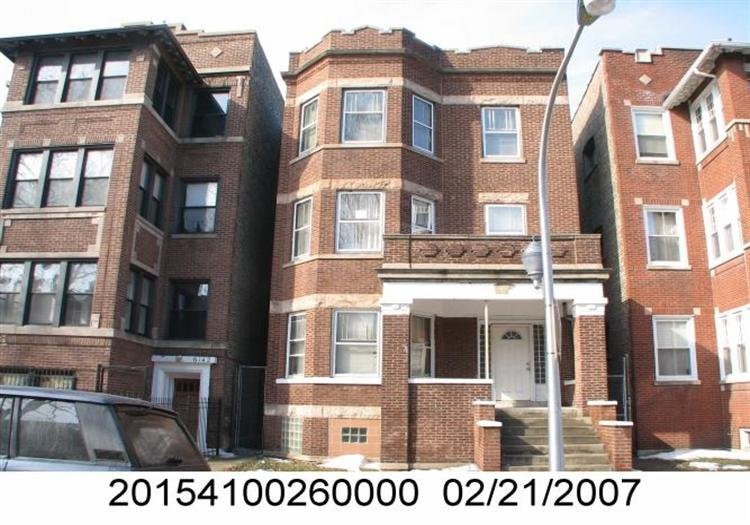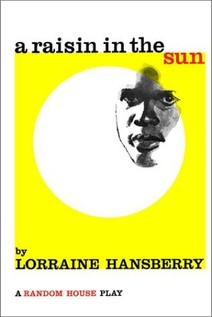Lorraine Hansberry House
Introduction
Text-to-speech Audio
The Lorraine Hansberry House was purchased in 1937 by Lorraine's father, Carl, an African-American real estate developer. Despite threats, Hansberry moved his family into the building and waged a three-year-long battle culminating in a U.S. Supreme Court decision that was an essential step in a broader movement that eventually outlawed racially-restrictive housing covenants. Lorraine Hansberry, an acclaimed playwright, faced racist bullies in school as a child and narrowly missed having a brick hit her in the head. She matured into an African American rights and political activist. Indeed, The F.B.I. maintained a thousand-page file on Hansberry. She drew inspiration from her battles and her father's struggles to write A Raisin in the Sun, which became the first Broadway production developed by an African American woman.
Images
Lorraine Hansberry

Lorraine Hansberry House

A Raisin in the Sun by Lorraine Hansberry

Backstory and Context
Text-to-speech Audio
The groundbreaking and acclaimed playwright, Lorraine Hansberry, was born into a middle-class family on Chicago's South Side in 1930. The youngest of four children, her mother, Nannie Perry, worked as a teacher, and her father, Carl Augustus, founded one of the city's first banks for Blacks and ran a successful real estate business. Lorraine's uncle, William Leo Hansberry, taught African studies at Howard University in Washington, D.C.
Despite the Hansberry family's middle-class status, the family still lived in a society with racism, and legally-supported segregation, abound. When Lorraine was eight, her father purchased the now-historic house in an all-white neighborhood that legally forbade Blacks from buying homes (restrictive covenants). The Hansberrys moved into the house in May 1937 and subsequently faced threats from white neighbors, including when a white mob threw a brick through a window that almost hit Lorraine in the head. Moreover, white kids bullied Lorraine in school.
Meanwhile, almost simultaneously, Harry H. Pace, a noted Black attorney and Supreme Liberty Life Insurance Company president, purchased a building nearby. Anna M. Lee, a White signatory of the restrictive covenant, filed suit against Hansberry and Pace. The circuit court ruled in Lee's favor, meaning the Hansberry family faced eviction. Carl Hansberry appealed the decision to the Illinois Supreme Court, which upheld the lower court's decision. However, the U.S. Supreme Court reversed the decision on a legal technicality; the case did not outlaw racist real estate covenants, but it ostensibly marked the beginning of their end.
Many well-known African American leaders visited the Hansberry household during Lorraine's childhood, including sociology professor W.E.B. DuBois, poet Langston Hughes, musician Duke Ellington and Olympic gold medalist Jesse Owens. Still, while Carl is often portrayed as a champion of Black rights, given the court battle, many argue Carl Hansberry merely fought for business reasons. He was known by many to charge much higher rents than others, often creating financial strains for poorer Black Chicagoans; Carl also supported the Republican Party despite the Black community routinely siding with the Democratic Party. Lorraine differed from her father regarding politics and values. After graduating from Chicago's Englewood High School, where she also got her start in theatre, she attended the University of Wisconsin and volunteered to campaign for Henry Wallace's Progressive Party. After the police appeared at a local protest where she participated, her parents forbade her to continue supporting Wallace, but she ignored her parents' wishes. While at the University, Hansberry got involved in student theatre. But, she struggled academically, so she left school and studied painting in Chicago and Mexico before moving to New York in 1950.
In New York, she worked as an assistant at the Harlem-based leftist newspaper Freedom and grew more politically active. Her roles in New York put her in contact with the likes of W.E.B. DuBois, and she met her eventual husband, Robert Nemiroff, a Jewish writer who shared her political views; the two married in the historic home in 1953. Three years after the wedding, Hansberry's husband and Burt D'Lugoff wrote the hit song "Cindy, Oh Cindy." Its profits allowed Hansberry to quit her job and spend time writing. She began writing A Raisin in the Sun, the first play written by an African American woman to be produced on Broadway. In the play, Hansberry drew inspiration from her family, her school experiences, and the working-class African Americans in Chicago who rented from her father.
Her second play, The Sign in Sidney Brustein's Window, about a Jewish intellectual, ran on Broadway for 101 performance, but It closed on January 12, 1965, the day Hansberry tragically died of pancreatic cancer at the young age of thirty-four years old. She died three years before the passage of the Fair Housing Act (included in the Civil Rights Act of 1968).
Sources
"From Riots to Renaissance: Hansberry's Victory." PBS: WTTW-Chicago. Accessed March 22, 2023. https://interactive.wttw.com/dusable-to-obama/hansberrys-victory.
"Hansberry v. Lee Case is Decided." African American Registry. Accessed March 22, 2023. https://aaregistry.org/story/supreme-court-rules-that-blacks-cannot-be-barred-from-white-neighborhoods/.
"Lorraine Hansberry Biography." Chicago Public Library. May 4, 2021. https://www.chipublib.org/lorraine-hansberry-biography/.
"Lorraine Hansberry House." City of Chicago: City Landmarks. Accessed March 22, 2023. https://webapps1.chicago.gov/landmarksweb/web/landmarkdetails.htm?lanId=13024.
Louis-Jacques, Lyonette. "Lorraine Hansberry: Her Chicago law story." The University of Chicago Library. March 06, 2013. https://www.lib.uchicago.edu/about/news/lorraine-hansberry-her-chicago-law-story/.
Lupton, John A. "Illinois Supreme Court history: Racial covenants." Illinois Courts. Accessed March 22, 2023. https://www.illinoiscourts.gov/News/1133/Illinois-Supreme-Court-history-Racial-covenants/news-detail/.
McClendon, Blair. "The Many Visions of Lorraine Hansberry: She's been canonized as a hero of both mainstream literature and radical politics. Who was she really?" The New Yorker. January 17, 2022 https://www.newyorker.com/magazine/2022/01/24/the-many-visions-of-lorraine-hansberry.
The University of Chicago Library: https://www.lib.uchicago.edu/about/news/lorraine-hansberry-her-chicago-law-story/
The University of Chicago Library: https://www.lib.uchicago.edu/about/news/lorraine-hansberry-her-chicago-law-story/
https://www.goodreads.com/book/show/5517.A_Raisin_in_the_Sun
